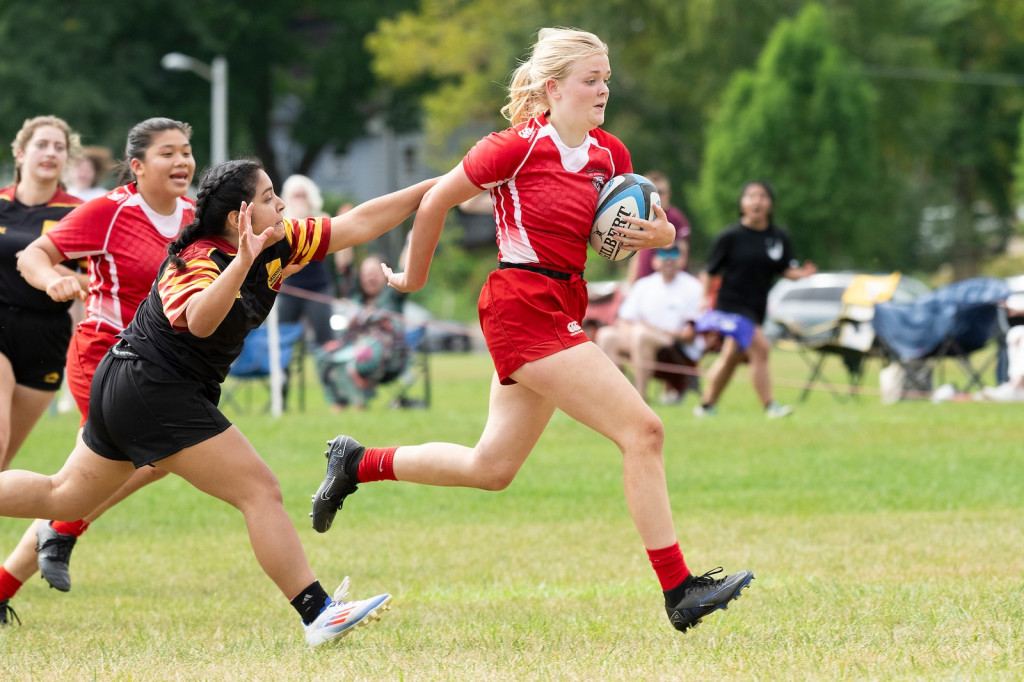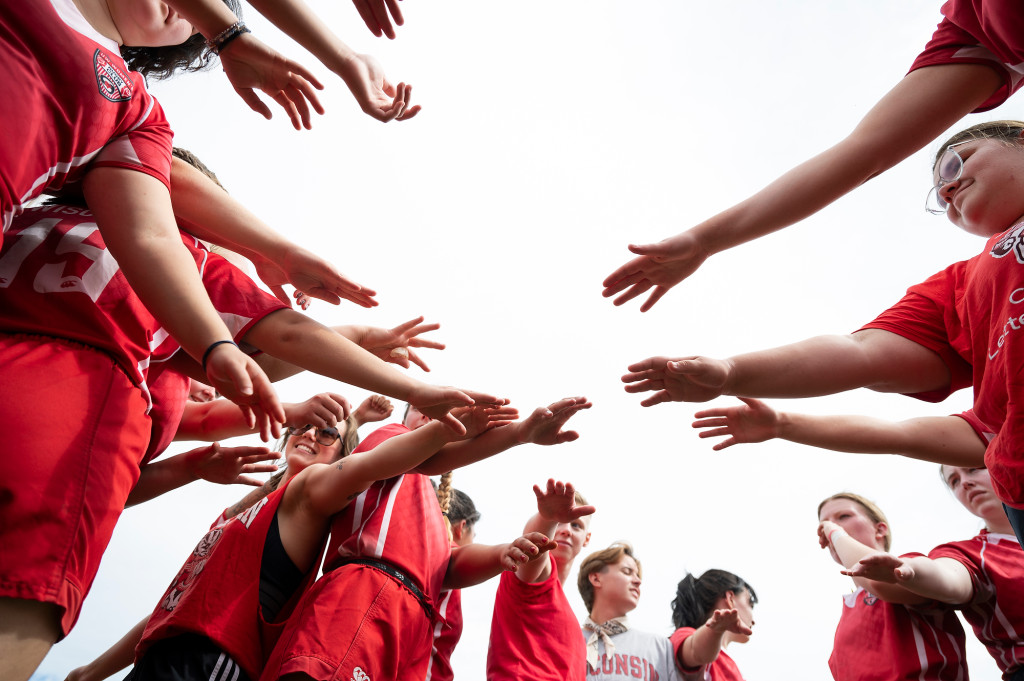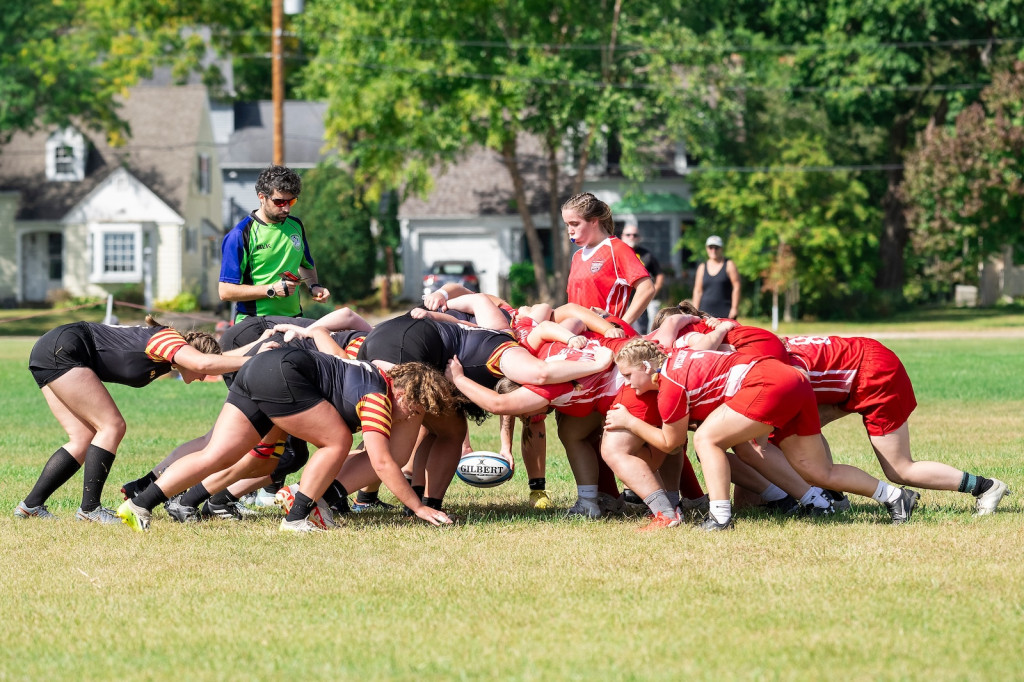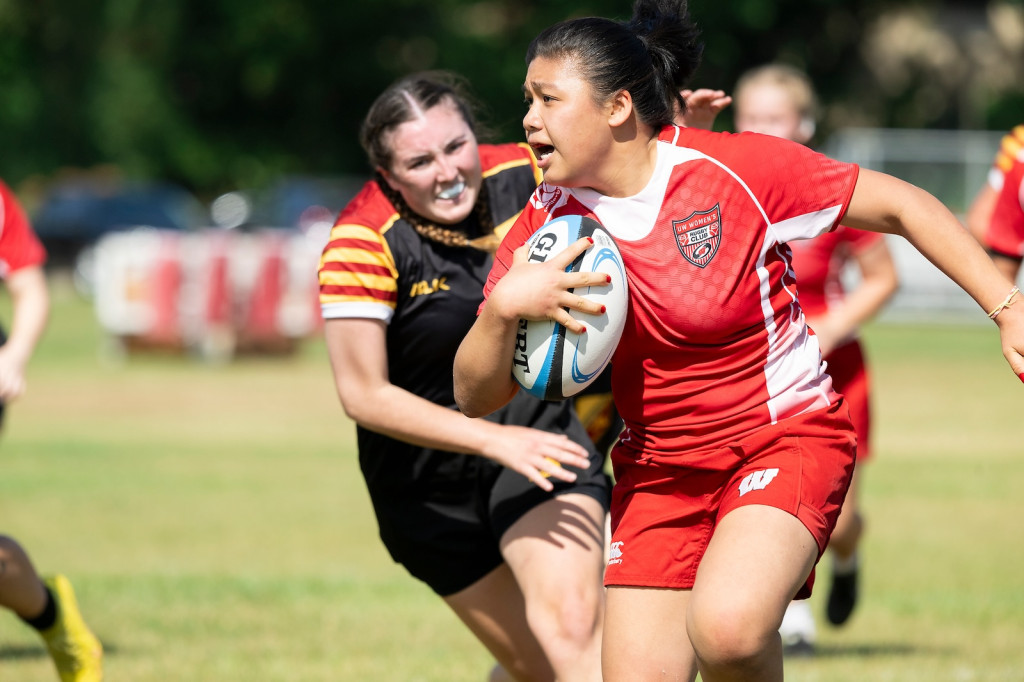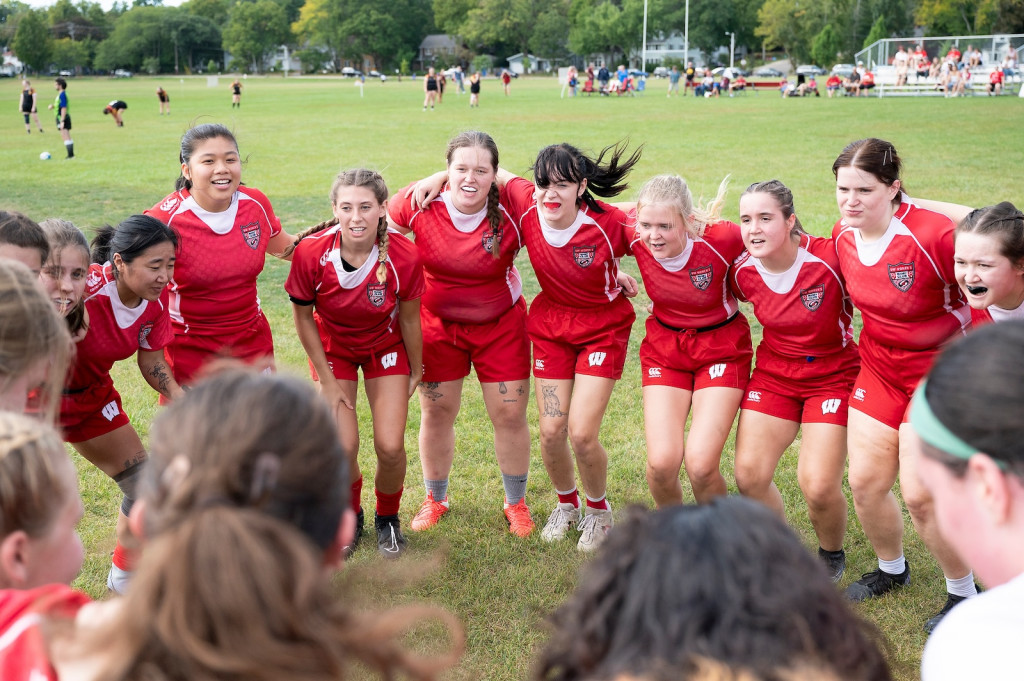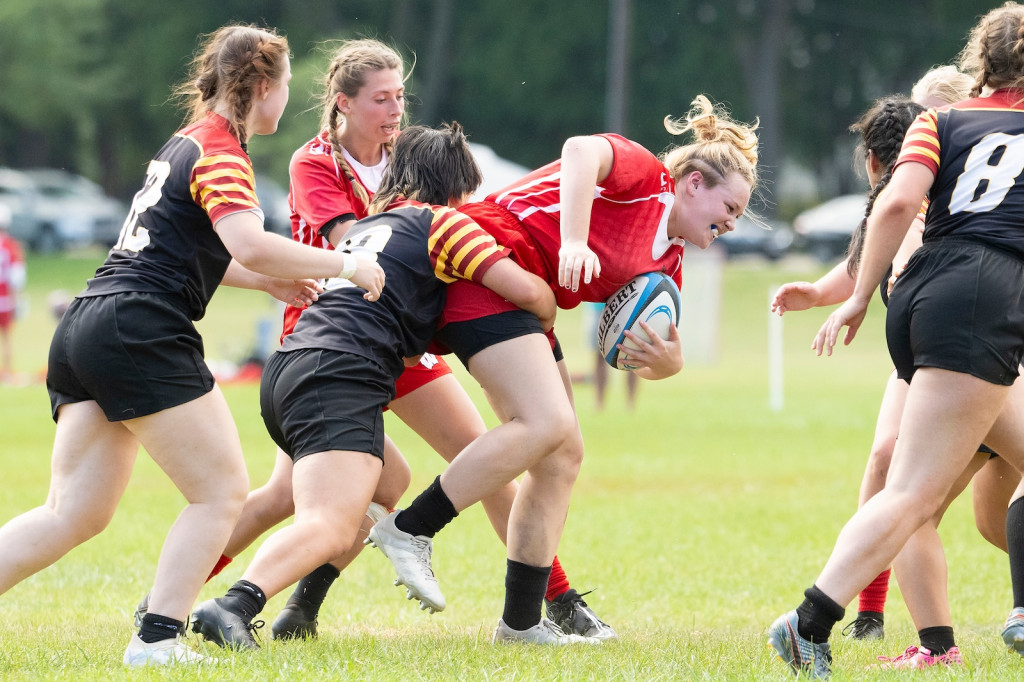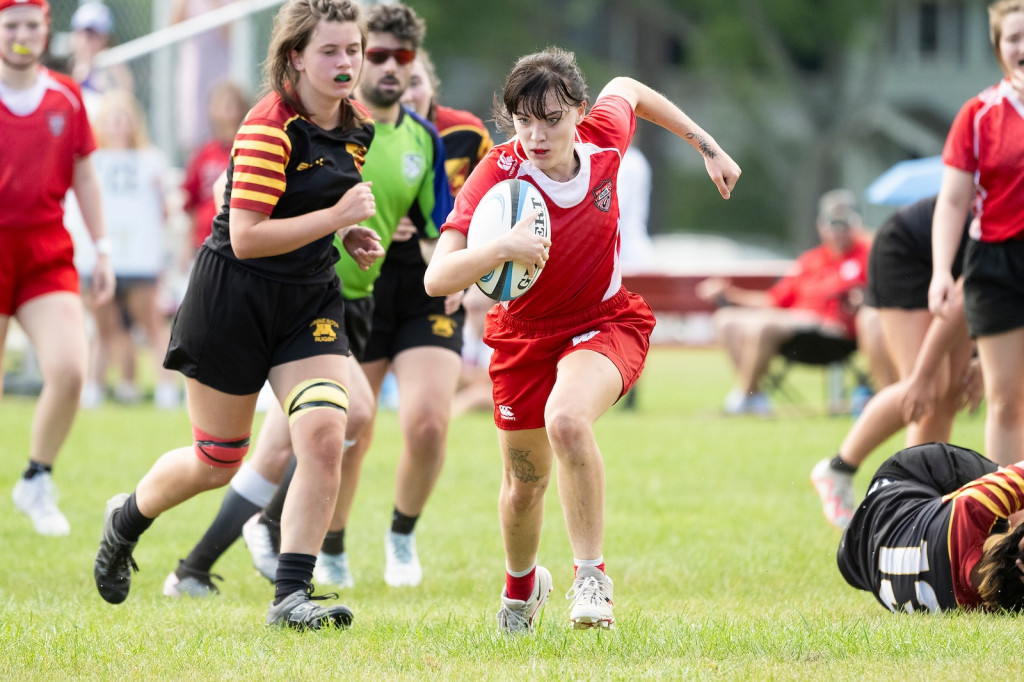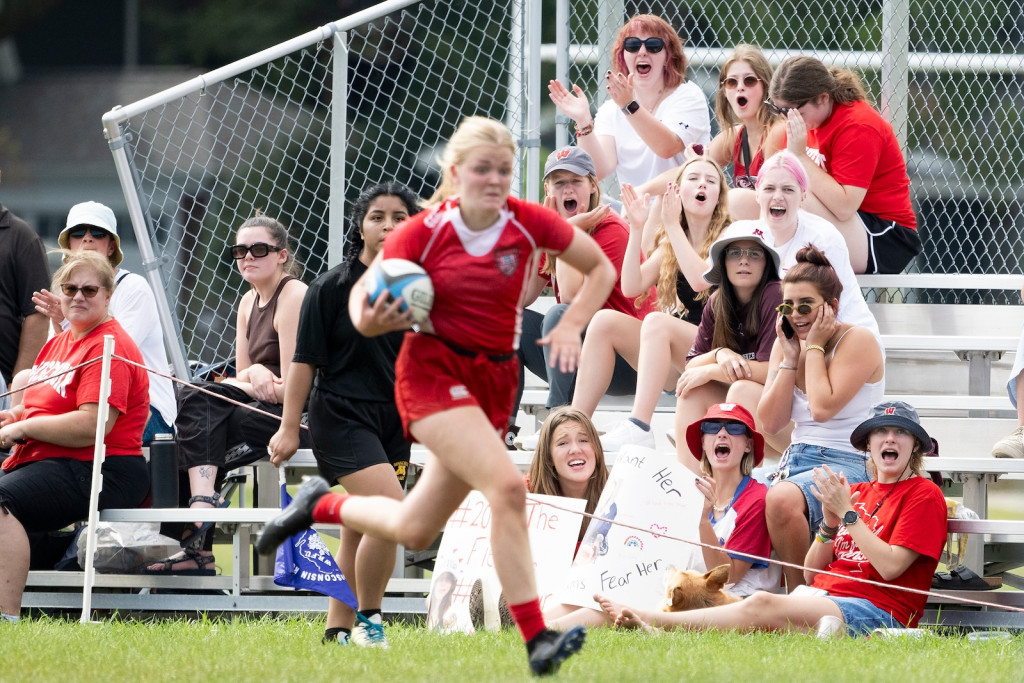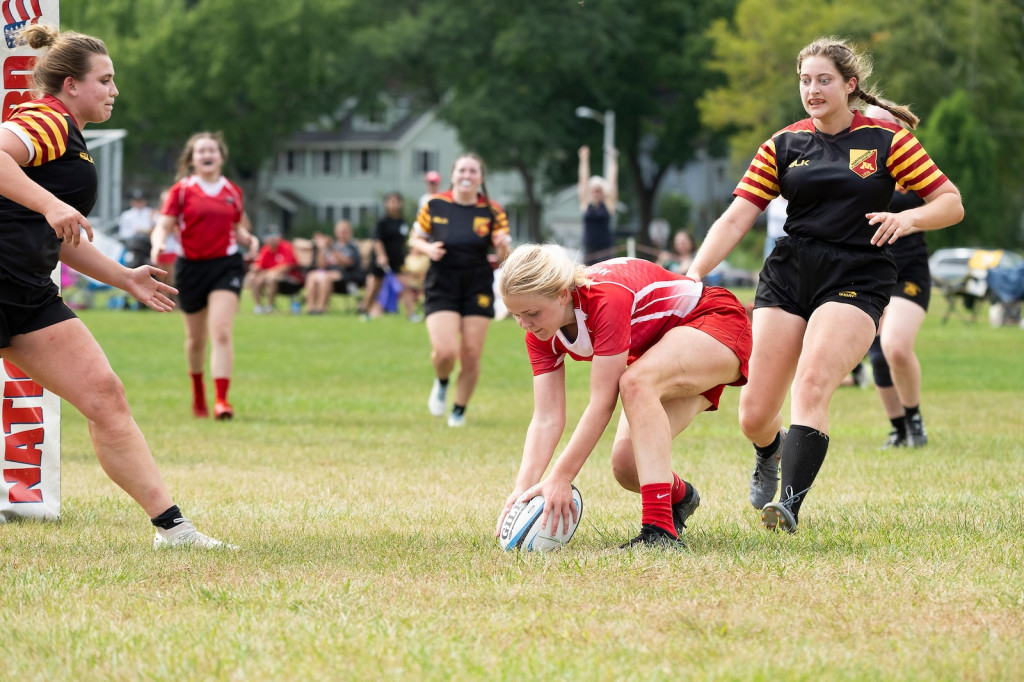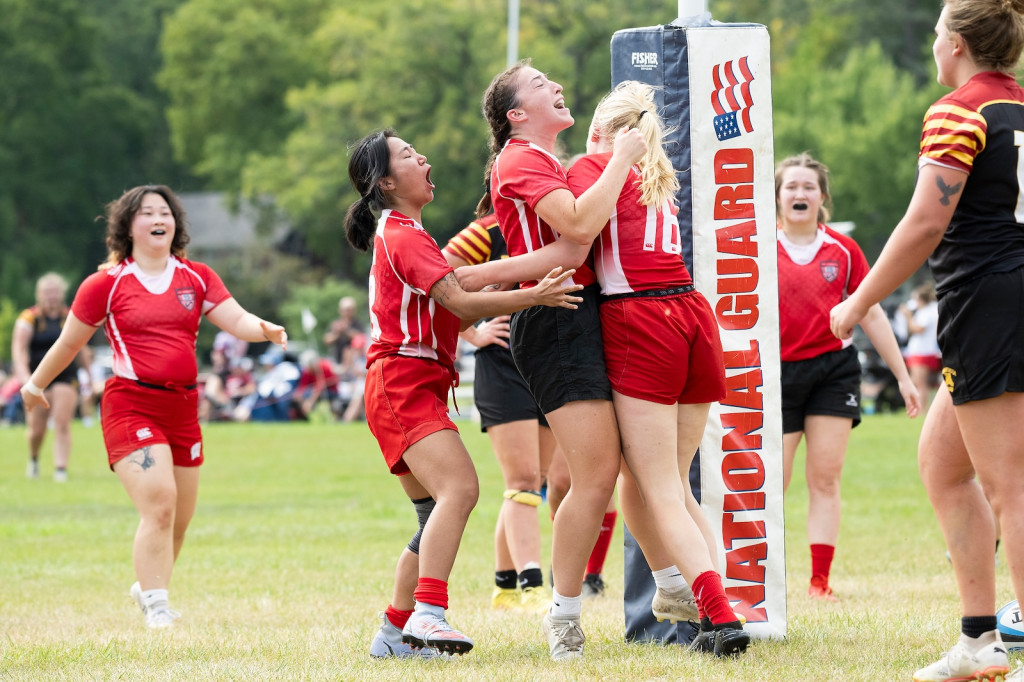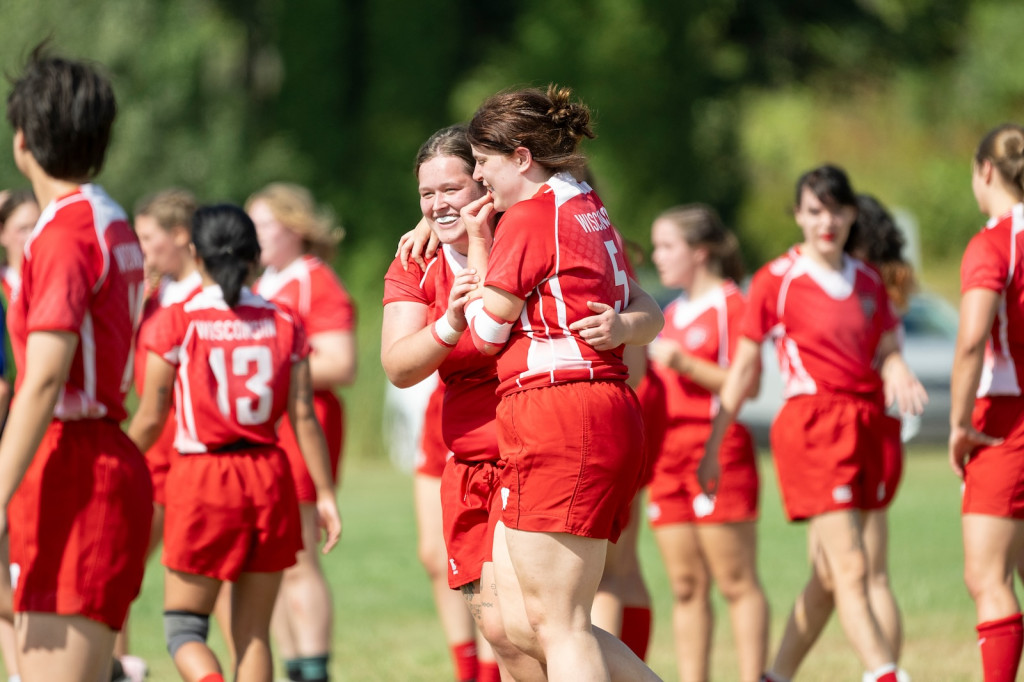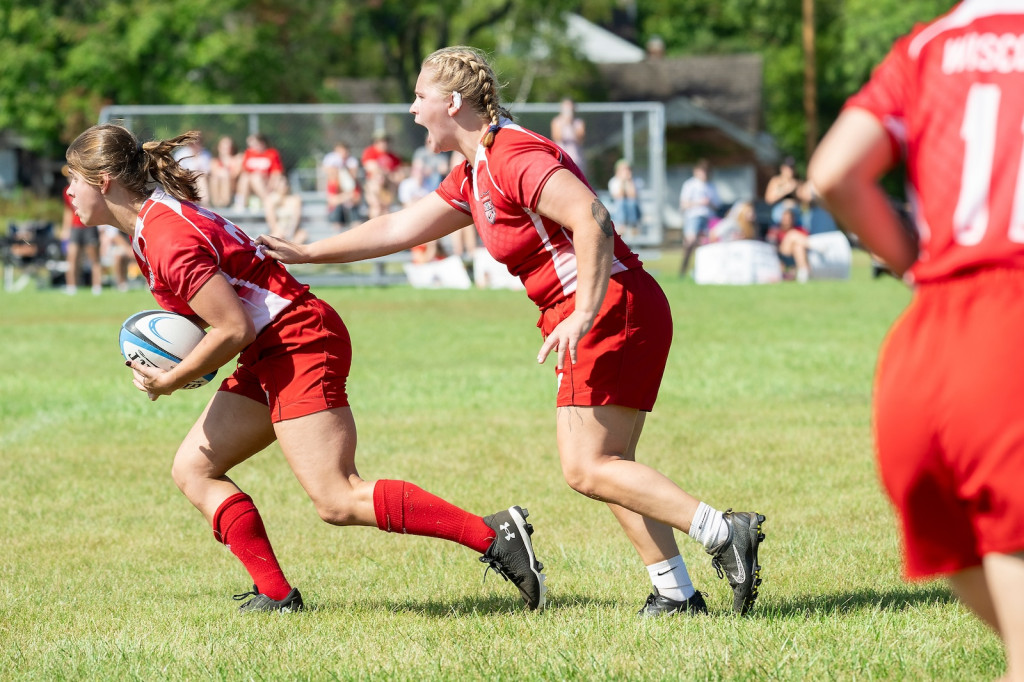Women’s rugby: Team spirit, physical challenge motivate players
To see all the scrums and tackles and drop kicks on the field during their match on Saturday, you’d never guess that most of the women on the University of Wisconsin Women’s Rugby Football Club team had never played the sport before joining.
“It’s a sport that a lot of people try for the first time in college,” says club team player and senior Lily Spanbauer, who herself was new to it. “I would say, out of our team of 30-plus, probably three or four girls played prior. Most people coming in were new, and they go in advertising that they take people of all skills.”
Rugby Club President Kassie Wurtinger and Spanbauer were both new to the sport but found themselves drawn to the team’s strong sense of community and the opportunity to challenge themselves in a highly physical — and mental — sport.
“Learning a new sport, especially as intricate as rugby, can feel very confusing and like a lot of information, but I have learned the rugby community is so kind and understanding, and they make it a lot easier,” says Wurtinger.
On Saturday, the team lost 31-30 to the University of Minnesota rugby club, but the excitement and team spirit were evident.
But it’s also a sport that’s coming into its own. This summer at the 2024 Olympic Games in Paris, U.S. women’s rugby stars like Illona Maher and Wisconsin’s very own Alev Kelter not only won a bronze medal, they also won over millions of Americans to a sport already popular in other parts of the globe.
For the UW–Madison Women’s Club rugby team, this isn’t news.
“As women’s rugby players, we’ve always known the value of our sport and women’s sports in general, but to see others recognize it, and acknowledge these incredible athletes, brings a sense of pride and hope,” says Wurtinger. “This attention not only highlights the sport and its players, but it also creates opportunities for growth, allowing more people — especially the younger generation — to become aware, get involved, and help the sport expand.”
After only a few months of competing with the club team, Wurtinger attended the Collegiate Rugby Championship in New Orleans, and grew even closer with her teammates and coaches.
There are many complexities to learn. In the fall, the team plays 15s style rugby, which essentially means there’s 15 active players per team on the field. In the spring, they play 7s style rugby, meaning seven individuals are playing per team.
For Spanbauer, a long-time runner, rugby presented a new set of physical challenges.
“I think that it’s a great representation of the strength and capabilities of women in sports,” says Spanbauer. “It’s one of those things that makes you understand how amazing your body is.”
That being said, Spanbauer also acknowledged there are many misconceptions about the physicality of women’s rugby – ones she hoped to clear up.
“In rugby they really do focus on safety and your body positioning,” says Spanbauer. “The first thing you learn is how to safely tackle people.”
Spanbauer explained how in rugby you must tackle below the sternum in order to be considered a legal hit. This not only protects players heads but their necks, spines and more.
Wurtinger embraced the inclusivity that rugby presents to all athletes whether they be college students trying it out for the first time, or longtime players an opportunity to get involved.
“It’s truly designed for all body types, ages, and backgrounds—there’s a role for everyone on the field,” says Wurtinger. “Especially for women, rugby allows us to embrace our strength and physicality, which is both empowering and rewarding.”
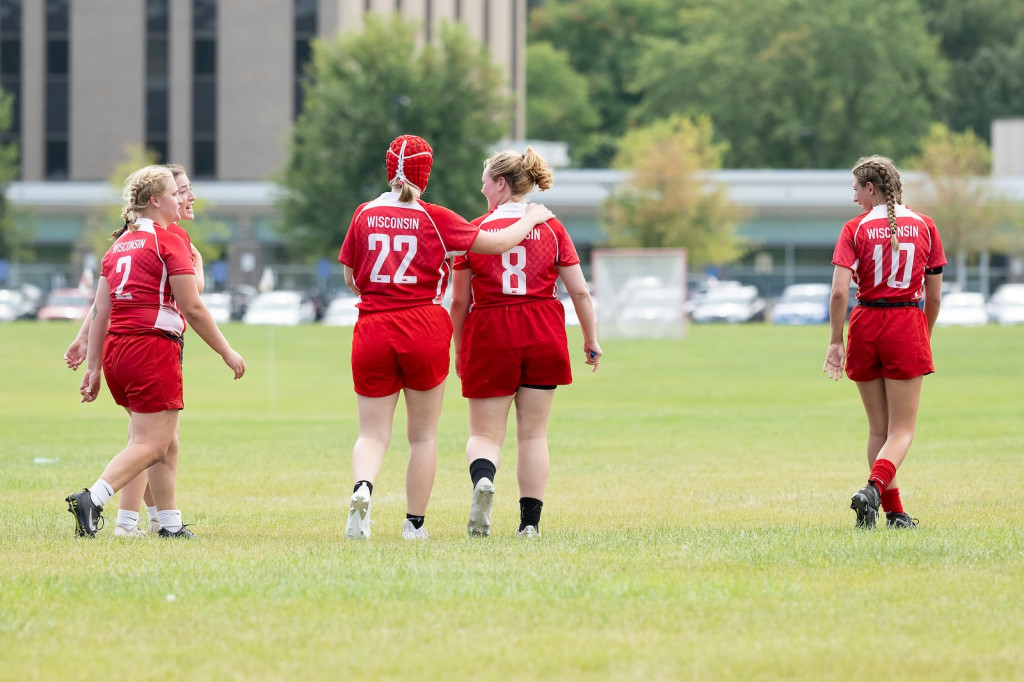
Players leave the field after the game. Photo by Paige Valley
Tags: students

